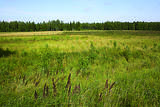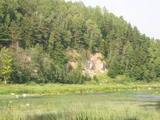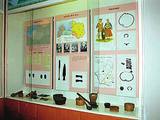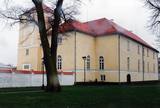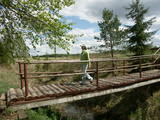| Nr | Nosaukums | Apraksts |
|---|---|---|
|
Izteiksmīgs zemesrags, kas klāts ar
dažāda lieluma laukakmeņiem.
|
||
|
Hāpsala kādzreiz bija aristokrātu iecienīta vieta, viņi mēdza šeit uzturēties vasaras laikā. Mūsdienās apmeklētājus vilina pilsētas šarms - mazās ieliņas, vecās koka ēkas un skaistā promenāde. Viens no iemesliem, kādēļ Hāpsala bija tik populāra kādreiz, bija SPA plašie piedāvājumi un iespējas, kas ir aktuāli arī mūsdienās. Interesants fakts: slavenajam komponistam Čaikovskim šī vieta bija viena no mīļākajām, kur pavadīt brīvdienas. |
||
|
Omulīgais krodziņš Elvas centrā nodrošinās jums ne tikai pilnu vēderu, bet arī draudzīgu atmosfēru. Daudzveidīgajā ēdienkartē sev iemīļotus ēdienus atradīs pat visizvēlīgākie apmeklētāji, tai skaitā vegāni. Ir iespējams noīrēt telpas, pasūtīt maltītes. Vasaras sezonā pieejama arī ārējā terase. |
||
|
Atpūtas māja Ugaraja Kotkapesa ir omulīga vieta, kur saimnieki viesiem piedāvā mājas ēdienus pēc pašu izvēles no apkārtnē izaudzētajām izejvielām. Atpūtas mājā ir liela zāle un sauna, bet apkārtne piemērota interesantiem pārgājieniem. |
||
|
Teirumnīku purvs ir latvijas lielākā iekšzemes mitrāja - dabas lieguma "Lubāna mitrājs" sastāvdaļa, kas meklējams dienvidaustrumos no Lubāna ezera. |
||
|
Atrodas Daugavas labajā krastā pie Karikstes upītes ietekas Daugavā. Pili, no kuras mūsdienās ir saglabājusies tikai sienas drupas un pamati, Livonijas ordenis uzcēla 1224. gadā. To apdzīvoja līdz 17. gs. vidum, kad Poļu - zviedru kara laikā celtni sagrāva. Uz pilsdrupām paveras labs skats no ceļa (grantēts), kas aizlokas lejup pa Daugavas ielejas labo krastu. |
||
|
Teikām un nostāstiem apvīta vieta par šeit kādreiz
esošo Vīdala (Dieviņa) ezeru, kura ūdens 1838. g. tika nolaists jūrā. Interesanti,
ka ezera dibenā pēc ūdens nolaišanas atrada senas celmu un kuģu atliekas.
|
||
|
Krodziņš "Rančo" atrodas Rīgas - Liepājas šosejas 136. kilometrā, un saviem apmeklētājiem piedāvā gardus ēdienus un omulīgu atmosfēru. Ēdienkartē iekļauti latviskie ēdieni, ir iespējams pasūtīt banketus. Latviešu virtuve: Skābu kāpostu zupa, skābeņu biezzupa, aukstā zupa, asinsdesa, pelēkie zirņi ar speķi, siļķe ar biezpienu un kartupeļiem, kartupeļu pankūkas, plānās pankūkas. |
||
|
Ja mērķis ir savākt pilnvērtīgu etnogrāfisko ciemu fotokolekciju, ir jāapskata Strazdi (no lietuviešu valodas strazdai tulkojumā nozīmē strazds), kas ir pavisam neliela apdzīvota vieta Balošas (Baluošas) ezera ziemeļu krastā. Strazdi pirmoreiz rakstos minēti 1783. g. un ciema nosaukums cēlies no kādas mežziņu dzimtas uzvārda. |
||
|
Vecauces ev. lut. baznīca ir valsts nozīmes arhitektūras piemineklis. Baznīca pirmo reizi uzcelta kā koka būve 1667. gadā, bet pēc zibens spēriena 1729. gadā tā nodega. Mūra baznīca celta 1744. gadā, savukārt 1866.gadā Mēdemu valdīšanas laikā baznīcu paplašināja līdz 500 sēdvietām, izgatavoja jaunu altāri, kanceli un uzstādīja Liepājas ērģeļmeistara Kārļa Hermaņa būvētas ērģeles. meklētājiem piedāvā doties interesantā, izklaidējošā un informatīvā ekskursijā pa baznīcu, apskatot ekspozīciju "Auce pirmās Latvijas brīvvalsts laikā" un baznīcas bibliotēku (Baznīcas grāmatas (pirmās Latvijas brīvvalsts laiks – 1918.-40.g., vācu laiks, padomju laiks un šodiena)). Baznīcā izveidotajā Mākslas telpā apskatei tiek piedāvātas vairākas unikālas ekspozīcijas: skolotājas Jadvigas Kupčes grāmatu un personīgo lietu ekspozīcija, kantātes “Dievs Tava zeme deg” vārdu autora Andreja Eglīša ekspozīcija, izcilā flamenko ģitārista Andreja Kārkliņa un režisora Kārļa Pamšes ekspozīcijas. |
||
|
Viens no skaistākajiem Ventas upes ielejas un tās pietekas – Šķērveļa posmiem ar izteiktu dziļu upju ieleju un tās sānu gravu sistēmu, kurā dažviet redzami dolomīta un smilšakmens atsegumi un strauji upju posmi (straujteces). Ventas krastos atsedzas arī izmēros lielākie Kurzemes pamatiežu atsegumi – Ātraiskalns un Gobdziņu klintis. Netālu no lieguma atrodas Lēnu katoļu baznīca. Šobrīd lieguma teritorijā nav nekādu labiekārtotu tūrisma elementu – taku, atpūtas vietu u.c. Venta posms no Nīgrandes līdz Kuldīgai ir populārs ūdenstūrisma galamērķis. |
||
|
Atrodas Viļānu centrā, Kultūras laukumā 2. Muzeja ekspozīcijas mērķis – iepazīstināt interesentus ar pilsētas vēsturi no senatnes līdz mūsdienām. |
||
|
Atrodas uzpludinātās Daugavas un Pērses satekas vietā. To cēla Rīgas bīskapijas vajadzībām 1209. g. bijušās senlatviešu koka pils vietā. 14. gs. pils pagalmā bija uzbūvētas koka ēkas, kas bija piemērotas pastāvīgai dzīvošanai. 16. gs. uzcēla piebūves un divus apaļos torņus. 1701. g. šķietami nesagraujamo pili uzspridzināja sakšu karaspēks. Pie pilsdrupām darbojas apmeklētāju centrs, kur var izkalt viduslaiku monētu un noīrēt laivu braucienam pa Daugavu. Vērts doties pastaigās pa Kokneses parku (veidots 1900. g.), kurā apskatāmi 17. gs. zviedru lielgabali, viduslaiku kapu pieminekļi un atjaunotā strūklaka „Fauna galva”, kas 20. gs. 30. gados atradās netālu no Pērses ūdenskrituma (tagad zem ūdens). |
||
|
Resnākā un lielākā Latvijas parastā īve (Taxus baccata). Aug Zentenes muižas parkā iepretim muižas pilij (tagad - skola).
|
||
|
Atrodas Pļaviņās, iepretim Kaļķu ielai, Daugavas krastā, kur no baļķiem un akmeņiem ir izveidota simboliska plosta daļa t.s. plene. Apkaimē ir izvietoti informatīvi stendi ar fotogrāfijām, kas stāsta par Daugavas plostnieku ikdienas smago darbu, pārvarot upes krāčainos posmus. |
||
|
Pili cēla kā militāri stratēģisku objektu, tādēļ tā savā pastāvēšanas laikā ir piedzīvojusi dažādus laikus un varas. Celtne (pirmoreiz pieminēta 13. gs. beigās), neskatoties uz postošajiem kariem, ar minimālām izmaiņām ir saglabājusi savu ordeņa pils pamatapjomu un būtību, kas ir Latvijai unikāls gadījums! Dēvēta arī par Latvijas vecāko viduslaiku cietoksni. Kopš 2001. gada ēkā ir izveidots Ventspils muzejs – viens no modernākajiem Latvijā. |
||
|
Šaursliežu dzelzceļa līnijas posms ar sliežu platumu 750 mm, kas savieno Alūksni un Gulbeni, ir daļa no kādreizējā Stukmaņu–Valkas dzelzceļa līnijas. Šobrīd tas ir Latvijā vienīgais funkcionējošais regulārās pasažieru satiksmes šaursliežu dzelzceļš. Bānītis kursē katru dienu. Alūksnes dienviddaļā celto Alūksnes stacijas ēku atklāja 1903. g. 33 km garo līniju, kurā ir 10 stacijas un pieturas punkti, bānītis veic ~ pusotras stundas laikā. Populāri ir ikgadējie Bānīša svētki, kas pulcina mazbānīša entuziastus. Vasaras sezonā tiek piedāvāti speciālie tvaika reisi ar restaurēto tvaika lokomotīvi “Ferdinands”. |
||
|
Lielākais Baltijas valstīs. Tartu maratona trase, mākslīgo klinšu siena un velomaratorna trase. Slēpju muzejs. Tehvandi tramplīnā – skatu platforma. |
||
|
Pēc izmēriem neliela, ar mežiem klāta teritorija, kurā izplūst sēravoti. Populārākais no tiem – Ellītes sēravots satur mazmineralizētu sērūdeni, kam piedēvē dziedznieciskas īpašības. Sēravota apkārtne ir labiekārtota un to atrast palīdzēs taka un informācijas stends. Avotu uzskata par Iecavas izteku. Dabas liegums veidots ar sēravotiem saistīto biotopu un aizsargājamu augu sugu saglabāšanai.
|
||
|
Jaukta plāna Ilzenberga muižas parks, izveidots 19.gs. otrajā pusē, ir palicis tāds pats līdz mūsdienām. Gleznaina, izteiksmīga reljefa vietā starp Ilgio un Apvalasa ezeriem. Atjaunojot parku, saglabāta bijušā parka telpiskā struktūra. Parks aizņem 10 ha teritoriju un ir veidots no divām daļām. Pirmā – tā ir salīdzinoši prezīca tainsstūra formas teritorija blakus muižai, apjozta ar mazlapu liepu rindām un ainaviski izvietotiem vietējo un introducēto koku sugu stādījumiem. Otrā daļā – dabiskā meža tipa stādījumi. Lielākais Ilzenberga muižas parkā augošais ozols ir pasludināts par valsts apskargājamo dabas mantojuma objektu. Šī varenā koka stumbra apkārtmērs – 6.3 m, diametrs – 2 m, augstums – 30,5 m. |
||









